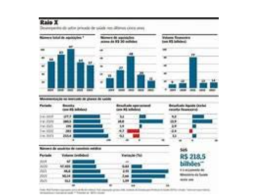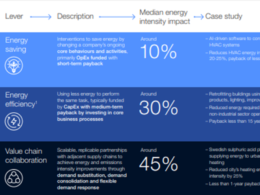The health strategist
research institute, knowledge portal & advisory consulting
for continuous health transformation
and digital health — for all
Joaquim Cardoso MSc.
Servant Leader,
Chief Research & Strategy Officer (CRSO),
Editor in Chief and Senior Advisor
January 15, 2024
This is an excerpt of the publication “Global Risks Report 2024”, published by the World Economic Forum, on January 2024″
The Cost-of-living crisis remains a major concern in the outlook for 2024 (Figure B).
The economic risks of Inflation (#7) and Economic downturn (#9) are also notable new entrants to the top 10 risk rankings over the two-year period (Figure C).
Although a “softer landing” appears to be prevailing for now, the near-term outlook remains highly uncertain.
There are multiple sources of continued supply-side price pressures looming over the next two years, from El Niño conditions to the potential escalation of live conflicts.
And if interest rates remain relatively high for longer, small- and medium-sized enterprises and heavily indebted countries will be particularly exposed to debt distress (Chapter 1.5: Economic uncertainty).
Economic uncertainty will weigh heavily across most markets, but capital will be the costliest for the most vulnerable countries. Climate-vulnerable or conflict-tprone countries stand to be increasingly locked out of much-needed digital and physical infrastructure, trade and green investments and related economic opportunities. As the adaptive capacities of these fragile states erodes further, related societal and environmental impacts are amplified.
Similarly, the convergence of technological advances and geopolitical dynamics will likely create a new set of winners and losers across advanced and developing economies alike (Chapter 2.4: AI in charge). If commercial incentives and geopolitical imperatives, rather than public interest, remain the primary drivers of the development of artificial intelligence (AI) and other frontier technologies, the digital gap between high- and low-income countries will drive a stark disparity in the distribution of related benefits – and risks.
Vulnerable countries and communities would be left further behind, digitally isolated from turbocharged AI breakthroughs impacting economic productivity, finance, climate, education and healthcare, as well as related job creation.
FIGURE D Global risks landscape: an interconnections map

Source World Economic Forum Global Risks Perception Survey 2023-2024.
Over the longer term, developmental progress and living standards are at risk. Economic, environmental and technological trends are likely to entrench existing challenges around labour and social mobility, blocking individuals from income and skilling opportunities, and therefore the ability to improve economic status (Chapter 2.5: End of development?).
Lack of economic opportunity is a top 10 risk over the two-year period, but is seemingly less of a concern for global decision-makers over the longer-term horizon, dropping to #11 (Figure E).
High rates of job churn – both job creation and destruction – have the potential to result in deeply bifurcated labour markets between and within developed and developing economies.
While the productivity benefits of these economic transitions should not be underestimated, manufacturing- or services-led export growth might no longer offer traditional pathways to greater prosperity for developing countries.
The narrowing of individual pathways to stable livelihoods would also impact metrics of human development – from poverty to access to education and healthcare.
Marked changes in the social contract as intergenerational mobility declines would radically reshape societal and political dynamics in both advanced and developing economies.












